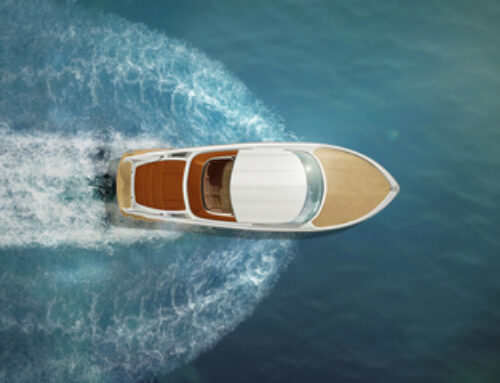Thread technology: Polyester vs. PTFE
By Andrea Swensson
Thread may seem like a minute detail when considering an overall marine fabrication project, but the type of thread used can make or break the overall success of a boat cover, bimini or similar end product. Though cotton thread was once commonly used to sew outdoor products, developments in chemical technology have provided fabricators with significantly more durable and reliable options for creating quality marine projects.
“Thread is proportionally very small in marine applications, however, it is critical for the overall life of the product,” stresses Kristi Bidinger of Quality Thread & Notions Co. in Solon, Ohio. “For this reason, appropriate thread selection is very important.”
Here’s a quick overview of the two most recommended types of thread for marine sewing projects, and the benefits and drawbacks of each type.
Polyester
A polyester thread is typically recommended for projects where cost is the most pressing concern, as it is by far the most cost-efficient of the two types of thread discussed here. “Polyester has good inherent UV stability and is improved by adding UV-resistant dyes,” Bidinger explains. “In an effort to combat the degradation of polyester thread in the outdoor market, some manufacturers are adding nanotechnology with UV inhibitors to the polyester fiber during the manufacturing process. This application of nanochemistry is reported to increase thread life by 12 to 18 months.” However, Bidinger warns against using polyester thread for projects that are intended to last longer than two or three years.
Polyester thread is affected by strong cleaners, so Bidinger says that extra care is required for projects sewn with this type of thread. “Polyester thread should be washed using mild, soapy water, and avoid using harsh chemicals, like bleach,” she says.
Pros
- Cost-efficient
- Nano technology can increase lifespan
Cons
- Affected by UV radiation and cleaners
- Short lifespan: two to three years tops
PTFE
Many manufacturers are recommending thread made of Polytetrafluoroethylene (PTFE) for its versatility and durability. The PTFE is a synthetic compound most commonly associated with the DuPont product Teflon, and is known for its non-reactive properties. “Polyester and cotton both have an inherent weakness: UV radiation eats them up,” says Erich Neal, a sales representative at W.L. Gore (a company best known for its Gore-Tex products). “In fact, a lot of those threads can lose as much as 50 percent of their strength on their first year that they are exposed to sunlight.” A thread made with PTFE, on the other hand, is resistant to UV radiation.
Neal’s company carries a PTFE thread called Tenara. “This thread is unaffected by sunlight,” says Neal. “It will outlast the material it is sewn into.” The Gore corporation is so confident in the lifespan of its Tenara thread that Neal says it comes with a lifetime warranty that guarantees it will stand up to UV radiation. “We’ve never yet had to fill that warranty,” he says.
Sounds perfect, right? The only catch is that Tenara and similar PTFE threads can cost five to 10 times more than typical polyester and cotton threads, but Neal says the extra cost is worth the investment. “It doesn’t rot or mildew or change shape, change color, or turn brittle,” he says. “You could put it in a bucket of bleach forever and it would not change.”
Pros
- Unaffected by UV radiation
- Chemically inert (won’t fade or degrade with cleaning)
- Waterproof
- Variety of colors and sizes
- Lifetime limited warranty for most brands
Cons
- Cost
 TEXTILES.ORG
TEXTILES.ORG 





